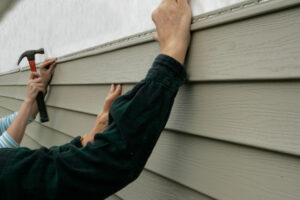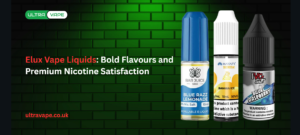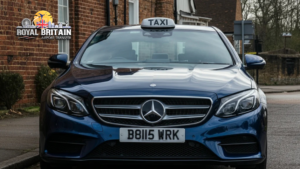Automotive Paints Market : Key Drivers, Regional
Global Automotive Paints Market Report (2025-2033)
By Vehicle Types, Technologies, Paint Types, Countries, and Key Company Analysis
Executive Summary
The global automotive paints market is projected to reach US$ 16.49 billion by 2033, growing from US$ 11.38 billion in 2024 at a CAGR of 4.21% during the forecast period. Key growth drivers include the increasing global demand for vehicles, technological advancements in paint applications, and a shift toward environmentally sustainable solutions.
Market Dynamics
Growth Drivers
1. Expansion of Electric and Autonomous Vehicles
The proliferation of EVs and AVs is significantly influencing the automotive paints industry. These technologically advanced vehicles demand specialized coatings that offer durability, UV protection, and aesthetic appeal. Distinctive body designs call for premium finishes like metallic, matte, and pearlescent coatings, contributing to heightened demand for high-end paints.
2. Rising Disposable Income and Luxury Vehicle Adoption
Emerging economies such as China, India, and Brazil are experiencing a surge in luxury car ownership. These vehicles often feature customized, high-performance coatings, leading to a robust demand for aesthetically sophisticated automotive paints. The personalization trend is redefining market expectations across consumer segments.
3. Technological Advancements in Durability and Performance
New-age automotive coatings offer resistance to harsh climates, UV exposure, chemicals, and scratches. Innovations such as self-healing paints, nano-coatings, and ceramic-based finishes are reshaping market preferences, especially in premium and electric vehicle segments.
Market Challenges
1. Environmental Regulations and VOC Emissions
Many traditional paints emit volatile organic compounds (VOCs) that negatively impact the environment. Regulations in countries like the U.S., Germany, and Japan limit VOC emissions, compelling manufacturers to shift toward low-VOC and water-based solutions.
2. Technological Constraints in Paint Application
High-quality finishes, especially with newer matte or metallic coatings, require precise application under controlled environments. Variability in temperature and humidity can lead to defects like blistering, orange peel effect, and inadequate adhesion. Additionally, the requirement for advanced robotics and skilled labor elevates operational costs.
3. Rising Competition from Alternative Coating Technologies
Powder coatings and electrocoats (e-coats) offer compelling alternatives due to their low environmental footprint and cost efficiency. As automakers prioritize sustainability, the market share of solvent-based paints may shrink, prompting traditional players to invest in R&D and innovation.
Related Report
- Turkey Automotive Robotics Market Size and Share Analysis – Growth Trends and Forecast Report 2025-2033
- Qatar Automotive Robotics Market Size and Share Analysis – Growth Trends and Forecast Report 2025-2033
- Israel Automotive Robotics Market Size and Share Analysis – Growth Trends and Forecast Report 2025-2033
- United Arab Emirates (UAE) Automotive Robotics Market Size and Share Analysis – Growth Trends and Forecast Report 2025-2033
Market Segmentation Analysis
By Vehicle Type
- Passenger Cars: Largest contributor to paint demand due to high sales volume and consumer preference for aesthetic customization.
- Light Commercial Vehicles (LCVs): Increasing in urban logistics and last-mile delivery sectors.
- Heavy Commercial Vehicles (HCVs): Demand driven by rugged coatings that resist wear and tear under harsh conditions.
By Technology
- Waterborne Coatings: Dominant due to low VOC emissions, high chemical resistance, and environmental compliance.
- Solvent-borne Coatings: Facing decline due to stricter environmental regulations.
- Powder Coatings: Gaining ground in commercial vehicle segment for their corrosion resistance and efficiency.
By Paint Type
- Clear Coat: Most preferred due to its protective function and glossy finish.
- Base Coat: Crucial for color and design; popular in custom and premium segments.
- Primer: Offers foundational adhesion and corrosion resistance.
- Electrocoat (E-Coat): Widely used for underbody protection, with increasing adoption in EV manufacturing.
Regional Insights
North America
- United States: A mature market with growing EV production and demand for sustainable coatings. Strong aftermarket support for repainting and custom work.
Europe
- United Kingdom & Germany: Innovation-driven markets with strong preference for high-end finishes and compliance with green regulations.
Asia Pacific
- China & India: Fastest-growing regions due to urbanization, disposable income growth, and rising automotive production. China leads in both production and EV adoption.
Latin America
- Brazil & Mexico: Emerging economies with rising LCV and passenger car sales. Growth in infrastructure and road logistics boosts demand.
Middle East & Africa
- United Arab Emirates: Market driven by luxury vehicle ownership, high customization demand, and climate-resistant coatings.
- South Africa: Automotive manufacturing hub in Africa, with growing paint demand for exports and local consumption.
Competitive Landscape
Key Players (with 3-View Analysis: Overview, Revenue, and Recent Developments)
- PPG Industries
- Akzo Nobel N.V.
- Axalta Coating Systems Ltd.
- The Sherwin-Williams Company
- Kansai Paints Co. Ltd.
- DuPont de Nemours Inc
- Solvay S.A
- Cabot Corporation
- Covestro AG
These companies focus on R&D, sustainable solutions, and global expansion to maintain their competitive edge.
Innovation & Future Outlook
- Self-healing paints, UV-curable coatings, and AI-assisted robotic spray systems are revolutionizing paint application and durability.
- Increased focus on digital color matching, custom texture design, and smart coatings that respond to heat or light.
- Manufacturers are investing in green chemistry to meet ESG goals and regulatory compliance.
FAQs
- How big is the Automotive Paint Market?
The market is projected to grow from US$ 11.38 billion in 2024 to US$ 16.49 billion by 2033. - Which technology leads the market?
Waterborne coatings lead due to their eco-friendliness and regulatory compliance. - Who are the major players?
PPG Industries, Akzo Nobel, Sherwin-Williams, Axalta, and Kansai Paints dominate. - Which country has the highest demand?
China leads globally, driven by production, EV adoption, and consumer demand.
Report Deliverables
| Feature | Details |
| Base Year | 2024 |
| Forecast Period | 2025 – 2033 |
| Delivery Format | PDF, Excel (PPT/Word on request) |
| Customization Scope | 20% Free Customization |
| Post-Sale Support | 1-Year Analyst Support |









